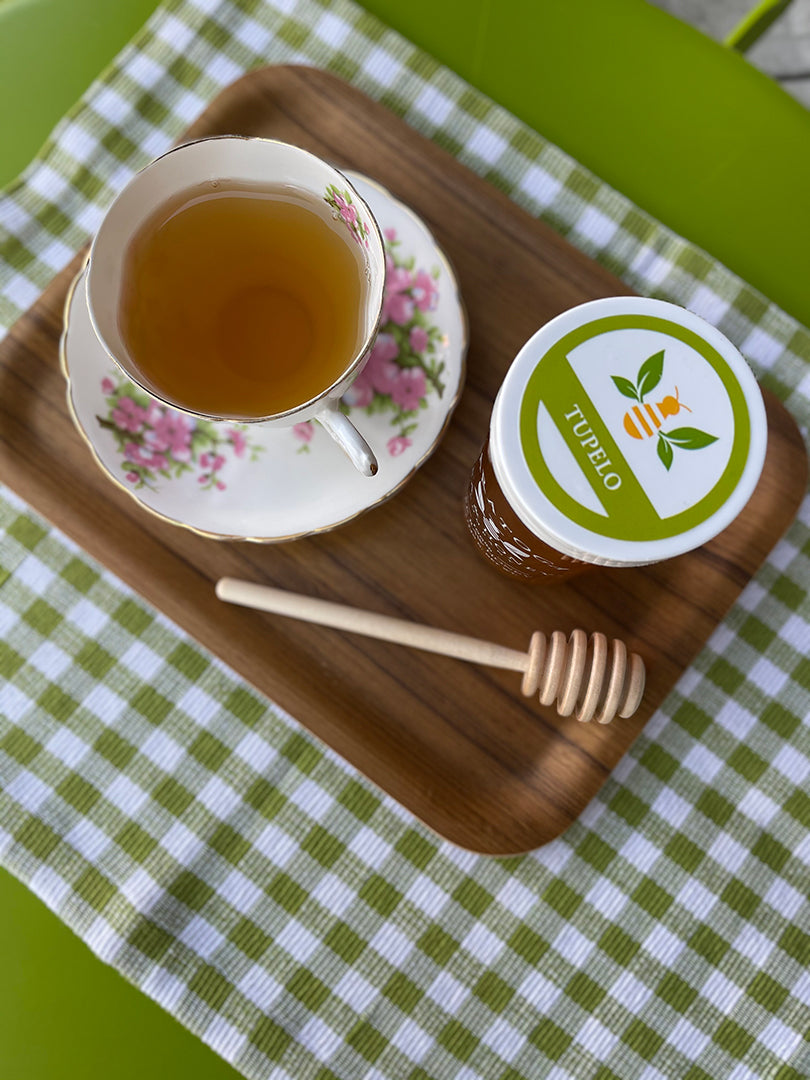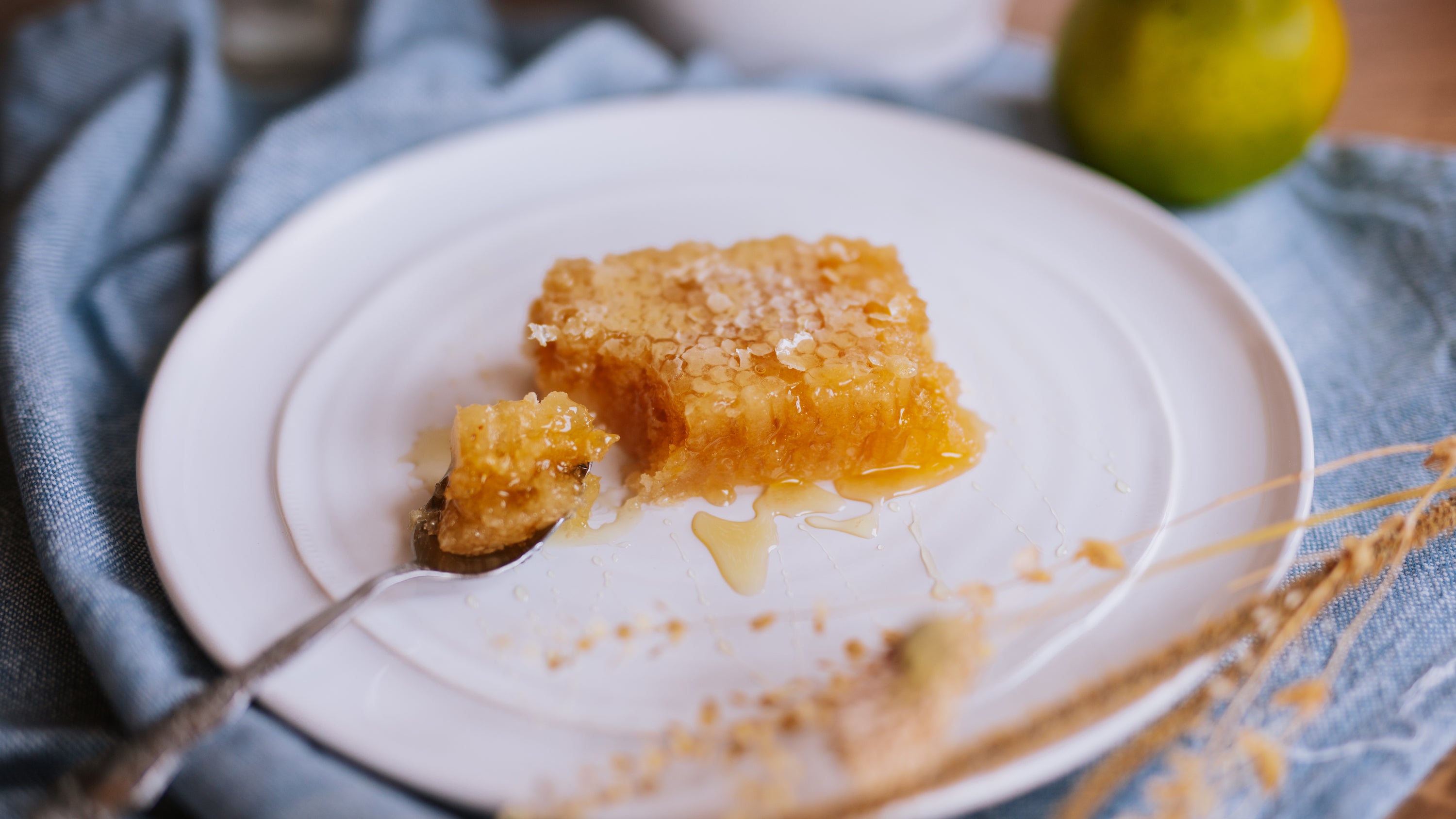
You most likely have heard of Tupelo honey. This famous honey has made its way into multiple pop culture references, including the 1997 movie Ulee’s Gold, a film that follows a beekeeper and his family troubles. Both the famous 1971 Van Morrison album and title track, Tupelo Honey, written in Woodstock, New York, and Tim McGraw’s song, Southern Girl, mention love interests as sweet as Tupelo honey. But what exactly is Tupelo honey? What makes it stand out among the rest? Why has it been referred to as the champagne, or the Cadillac of honey?
Tupelo honey is the blissful result of many different aspects of nature and labor coming together during a short period of time. Together Mother Nature, geography, and skilled beekeepers come together at just the right time to yield this sweet substance.
Geography
One common misconception is that Tupelo honey hails from the city of Tupelo, Mississippi. Tupelo honey is only commercially produced in a specific geographic region of Southern Georgia and the Florida panhandle, home to the Apalachicola River Basin. This system of winding rivers and swamps creates the perfect environment for Nyssa ogechee, also known as the White Tupelo, Ogechee Lime, or White Gum Tupelo tree, to thrive in large numbers. The roots and bases of this tree prefer to stay submerged in water. Most years, there is a Tupelo Honey festival held in the town of Wewahitchka, Florida. This area is notorious for its Tupelo Honey production, and here, beekeepers from the surrounding area come to show off their best product. There is a bit of a rivalry between which state, Georgia or Florida, produces the best of the best when it comes to Tupelo honey.
Environmental Risks
This region and its unique ecosystem have faced environmental factors that have led to a steady decline in Tupelo honey production since the mid 1900s. The New York Times now estimates that there are less than 200 beekeepers producing commercial amounts of Tupelo honey, as of 2019. Dams built along the Chattahoochee and Flint Rivers and an increase in agriculture in Southwest Georgia have led to a decline in the floodplain and tributaries of the Apalachicola River. A 2006 U.S. Geological Survey Report, "Water-Level Decline in the Apalachicola River Florida from 1954 to 2004 and Effects on Floodplain Habitats”, shows the loss of 3.7 million white Ogeechee tupelo trees due to the increasing lack of floodplain water flow since 1954. Another U.S. Geological Survey Report, “Drier Forest Composition Associated With Hydrologic Change in the Apalachicola River Floodplain, Florida”, describes the loss of at least 44 percent of Ogeechee tupelo trees from 1976 to 2004. In October 2018, category 4 hurricane Micheal came through the river basin area of Florida and Georgia, and damaged beehives and Tupelo trees, throwing off the normal Spring bloom schedule and resulting in a poor harvest season. In addition to the normal threats to beehives, such as mites, pesticides, and Colony Collapse Disorder, the increasing commercialization and development along these river basins, a decrease in floodplain water levels, and other environmental factors like hurricanes, could lead to the production of Tupelo honey continuing to decrease over time.
Harvest Season
Historically, beekeepers constructed and used wooden barges to float their hives on, right in the rivers and swamps, as close as possible to Tupelo trees. In order to get their beehives on these floating barges, they had to transport their hives on boats. These days, it is more common that beekeepers use land located close to the river’s edge, and place their hives there, eliminating the extra labor of the boat to barge hive transport. Land close to the river’s edge is high in value to the beekeepers, and is either passed down through generations, or negotiated between beekeepers and landowners. The promise of a few jars of pure, fresh Tupelo honey in exchange for a few weeks of hive housing is one I, myself, would not turn down!
Beekeepers have to act right on schedule, as Tupelo trees only bloom for a few weeks between April and early May each spring. If the environmental conditions aren’t just right, and it is too windy, too dry, or too rainy, this window will be shortened. These imperfect conditions will disrupt the bees ability to collect the pollen and nectar necessary for a good harvest. Other plants and trees, such as the Black Tupelo, Ti-ti, Black Gum, and Willow bloom just before the desired Ogechee Tupelo tree, and beekeepers must make sure they empty their hives at just the right time and replace them with empty frames. The same goes for the end of the few week window, as other plants, such as Gallberry begin to bloom. The bees do not differentiate between one plant and another, and follow whatever nectar source is available at the time. It is up to the beekeeper’s perfect timing to ensure the honey harvest is truly monofloral. Vaughn Bryant, the director of palynology at Texas A&M, where he tests the exact pollen and nectar makeup of honey, says many samples people send to him believing to be Tupelo, are often Gallberry. This means the beekeeper’s timing of emptying the hives, both before and after, was off. This demonstrates the importance of environmental observance required of successful beekeepers.
Taste
Tupelo honey is unique for its high fructose to glucose ratio. Because of this ratio, raw Tupelo honey is very slow to, and rarely ever crystallizes. The higher fructose to glucose ratio also makes Tupelo honey one of the sweeter honey options. Fructose is less taxing on your body than some other forms of sugar, and less likely to result in any “sugar crash”. Fresh Tupelo honey, straight from the hive, takes on a slightly green hue, due to the green pollen of the trees. Tasting notes include at first, a touch of cinnamon, then jasmine or citrus, before opening to a light and buttery sweet finish. We suggest trying it paired with a lightly oxidized oolong tea, such as Nantou Four Seasons, our June Tea of the Month. Or try it as a sweetener in our summer tea "sangria" recipes!



